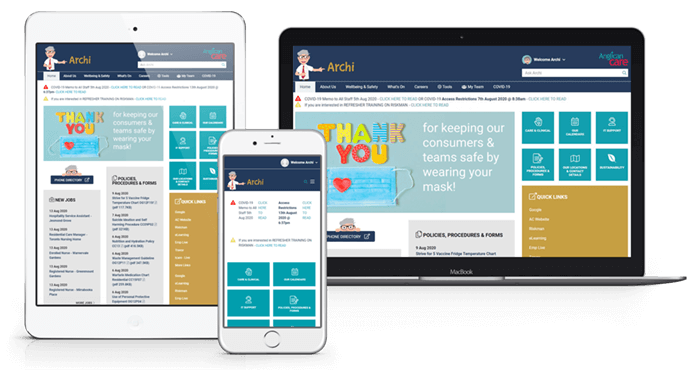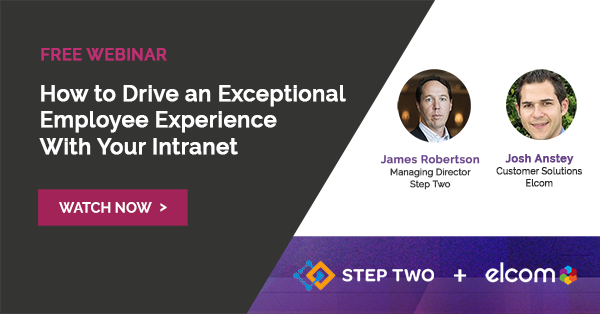With the increase in hybrid working arrangements, organisations are recognising the critical role frontline workers play in their success. These employees, often the first point of contact with customers and the driving force behind daily operations, require tailored support and engagement strategies.
An employee engagement platform for frontline workers is not just a tool; it's a bridge connecting the organisational vision with the practical, day-to-day experiences staff. By leveraging these platforms, businesses can significantly improve the frontline employee experience, leading to enhanced productivity, satisfaction, and ultimately, customer satisfaction.
As we delve deeper into this topic, we'll explore the importance of frontline employee experience, backed by relevant statistics and practical advice.
Importance of Frontline Employee Experience
Frontline employees are the backbone of many industries, often serving as the first point of interaction between a company and its customers.
Why does employee experience matter? Understanding and improving the frontline employee experience is crucial for several reasons:
- Enhanced Customer Satisfaction: Frontline workers directly impact customer experiences. A positive employee experience leads to better service quality, directly influencing customer satisfaction and loyalty.
- Increased Employee Engagement: Engaged employees are more productive and committed. An employee engagement platform for frontline workers fosters a sense of belonging and motivation, driving performance. Gallup found that companies with highly engaged workforces are 21% more profitable.
- Reduced Turnover Rates: High turnover is costly. By improving the frontline employee experience, companies can retain skilled workers, reducing recruitment and training costs.
- Better Communication: Effective frontline employee communication ensures that workers are informed, aligned with company goals, and feel valued, which is essential for operational success.
- Innovation and Improvement: When frontline employees have a positive experience, they are more likely to contribute ideas and feedback, driving innovation and continuous improvement.
Key Elements of Frontline Employee Experience Design
Here are some key elements to consider for creating an effective frontline employee experience design.
Actionable Feedback Mechanisms
- Structured Feedback Systems: Develop a structured system for collecting and analysing feedback. This could involve regular employee surveys, suggestion boxes, and digital platforms where employees can anonymously submit their thoughts and concerns. For example, a retail company could implement an intranet with a monthly “Employee Voice” forum where frontline staff present their ideas and concerns directly to management.
- Real-Time Feedback Tools: Implement tools that allow for real-time feedback during shifts or after specific tasks. For example, a mobile app where employees can quickly rate their daily work experience or report issues as they occur.
- Feedback Review Committees: Establish committees or task forces to review feedback and propose actionable solutions. These committees should include representatives from different levels, including frontline staff, to ensure diverse perspectives.
Learning Opportunities
- Personalised Learning Paths: Develop individual learning paths based on each employee's skills, career aspirations, and the needs of the organisation. Utilise e-learning platforms that allow employees to learn at their own pace.
- Cross-Functional Training: Encourage employees to learn about different functions within the company. For instance, a customer service representative could be trained in basic sales techniques, enhancing their skill set and understanding of the business.
- Mentorship and Coaching Programs: Pair employees with more experienced colleagues or external mentors. This can facilitate knowledge transfer, provide career guidance, and enhance professional development. A logistics company, for example, could introduce a “Skill of the Month” program, where employees were encouraged to learn a new skill relevant to their work. This can range from advanced safety procedures to customer communication techniques, with top learners recognised at a monthly meeting.
Skillset Alignment with the Role
- Regular Skills Audits: Conduct periodic audits to assess the skills of each employee and identify any gaps or areas for improvement. This can be done through self-assessments, manager evaluations, or formal skills testing.
- Role-Specific Training Modules: Develop training modules that are specifically tailored to the requirements of each role. For example, a warehouse employee might receive training in inventory management software, while a customer service representative might receive conflict resolution training. Whereas, a healthcare provider might implement a skills development program where frontline nurses are given the opportunity to attend workshops on the latest healthcare technologies and patient care techniques.
- Career Pathing Sessions: Hold regular one-on-one career pathing sessions with employees to discuss their career goals and how their current role aligns with these goals. Use these sessions to plan future training and development opportunities.
Open Communication and Dialogue
- Digital Communication Platforms: Implement digital tools like intranets, especially for distributed workforces, that facilitate instant and transparent communication across different levels of the organisation. For instance, a manufacturing company might use a team app to quickly communicate safety updates to its frontline workers. A retail chain might introduce a weekly video message from the CEO, shared across all stores, discussing company performance, acknowledging employee achievements, and addressing concerns raised by staff in the previous week.
- Regular Town Hall Meetings: Organise monthly or quarterly town hall meetings where senior leaders address frontline employees, discuss company updates, and field questions. This fosters a sense of inclusivity and transparency.
- Feedback Loops: Ensure that there are mechanisms for employees to respond to communications from management and that their responses are acknowledged and acted upon. For example, after a policy update, a follow-up survey could gauge employee understanding and acceptance.
Providing Employees with Personalised Support:
- Individualised Support Plans: Recognise the diverse needs of frontline workers by offering personalised support plans. This could include flexible scheduling for parents, mental health support for stress management, or physical accommodations for workers with disabilities. A hospitality business could introduce a “Life Concierge” service for its frontline staff, offering assistance with tasks like scheduling doctor’s appointments or finding childcare, thereby reducing personal stress and improving work focus.
- Employee Assistance Programs (EAP): Implement EAPs that provide confidential counselling services for personal or work-related issues. For example, a transportation company might offer EAP services to drivers to help them cope with the stresses of long-haul driving.
- Responsive HR Practices: Develop HR policies that are adaptable to individual circumstances, such as offering part-time work or sabbaticals. This shows a commitment to accommodating diverse employee needs.
Using Technology to Empower Employees
- Mobile-First Technology: Using technology to improve employee experience involves providing accessibility on smaller screens.Deploy mobile-friendly tools that allow employees to access work-related information and resources on-the-go. For instance, a delivery company might use a mobile app or a mobile optimised intranet that provides drivers with route information, delivery schedules, and real-time traffic updates.
- Interactive Training Tools: Use VR (Virtual Reality) or AR (Augmented Reality) for immersive training experiences. For example, a retail employee could use VR to simulate customer service scenarios, enhancing their skills in a safe, controlled environment.
- Data Analytics for Personalised Insights: Employ data analytics to provide employees with personalised insights into their performance, helping them understand areas for improvement and growth opportunities.
The Role of Frontline Employee Experience Platforms
Frontline employee experience platforms play a crucial role in enhancing the work life of those at the forefront of customer service and operations. Remember, delivering a great digital employee experience, leads to great customer experiences!
These platforms are designed to streamline processes, facilitate learning, and improve overall employee engagement. Let’s explore how they achieve this:
Streamlined Communication and Collaboration
- Centralised Communication Hub: These platforms often serve as a one-stop-shop for all communication needs, consolidating emails, messages, announcements, and updates in one accessible location. This centralisation eliminates the clutter of multiple communication channels and ensures that important information is not missed.
- Collaboration Features: Many platforms include features for team collaboration, such as shared calendars, project management tools, and real-time chat functions. For example, a team working on a new product launch can coordinate tasks, share files, and track progress all within the same system.
- Mobile Accessibility: Given the on-the-go nature of many frontline jobs, mobile accessibility is key. Platforms with mobile capabilities allow employees to stay connected and informed, regardless of their location.
Personalised Learning and Development Opportunities
- Customised Training Paths: These platforms can offer tailored learning experiences based on an employee’s role, skills, and career aspirations. This might include a mix of e-learning modules, virtual workshops, and in-person training sessions.
- Skill Tracking and Progress Monitoring: Employees can track their learning progress, set goals, and receive recommendations for further development. This empowers them to take charge of their own professional growth.
- Integration with Performance Goals: Learning and development opportunities can be aligned with performance goals, ensuring that employees are acquiring skills that are directly relevant to their roles and the company’s objectives.
Real-time Feedback and Performance Management:
- Continuous Feedback Loop: Unlike traditional annual reviews, these platforms can facilitate a continuous feedback loop where employees receive regular, constructive feedback on their performance. This can include peer reviews, manager assessments, and self-evaluations.
- Performance Analytics: Advanced analytics can provide insights into employee performance, highlighting strengths and areas for improvement. This data-driven approach helps managers make informed decisions about training needs and career development.
- Goal Setting and Tracking: Employees can set and track their performance goals within the platform, giving them a clear understanding of expectations and their progress towards meeting those expectations.
Self-service Tools and Resources
- Access to Information: Platforms often include a repository of resources such as company policies, procedure manuals, and FAQs. This self-service approach allows employees to find answers quickly and independently.
- Personalised Dashboards: Employees can have personalised dashboards showing their schedules, tasks, training modules, and performance metrics. This helps them manage their time and responsibilities more effectively.
- Automated Processes: Many routine processes, such as leave requests, expense claims, and shift swaps, can be automated through the platform. This reduces administrative burden and improves efficiency.
Anglican Care Intranet Case Study

Anglican Care has been operating since 1956 and has an outstanding reputation for the quality of care provided by their skilled and caring staff.
They launched Archi, their new intranet, to improve the employee experience of all frontline staff members. Archi has come a long way in helping them to create a go to for organisation wide information that can be centrally accessed with tools customised to staff roles. Archi has streamlined access to policies, procedures and forms which is crucial given our regulatory compliance needs.
When designing the home page, the team were conscious of incorporating features which would attract staff to utilise Archi on a day to day basis to assist them in their jobs. For example, they have incorporated three separate calendars shown via tabs, for committee meetings, training and events. This is particularly great for training, allowing staff to access information on training being conducted across the organisation.
It was also important for Anglican Care to customise Archi for different staff roles as much as possible. Quicklinks to key programs that assist staff to do their job have been tailored for different business segments. User data including group memberships is sourced from Active Directory and Preceda, which is matched to groups in Archi. For example, they have set up a team for their WHS Committee, which consists of a wide variety of staff from various geographic locations, where they are able to access Committee meeting minutes and other relevant information.
Because of the nature of their business there was a communication gap between their head office and other services. The intranet is helping them to strengthen workplace culture and remove silos by making information and communication inclusive and accessible to all staff, highlighting positive feedback, showcasing employee of the month profiles and regular CEO messages.
Conclusion
Successful employee experience management is not just a strategic move; it's a necessary evolution in the way businesses operate in the modern world.
Implementing frontline employee experience platforms and focusing on targeted strategies engages and supports these vital members of the workforce, and enables companies to achieve many benefits from increased customer satisfaction and employee engagement to innovation and reduced turnover.
.
